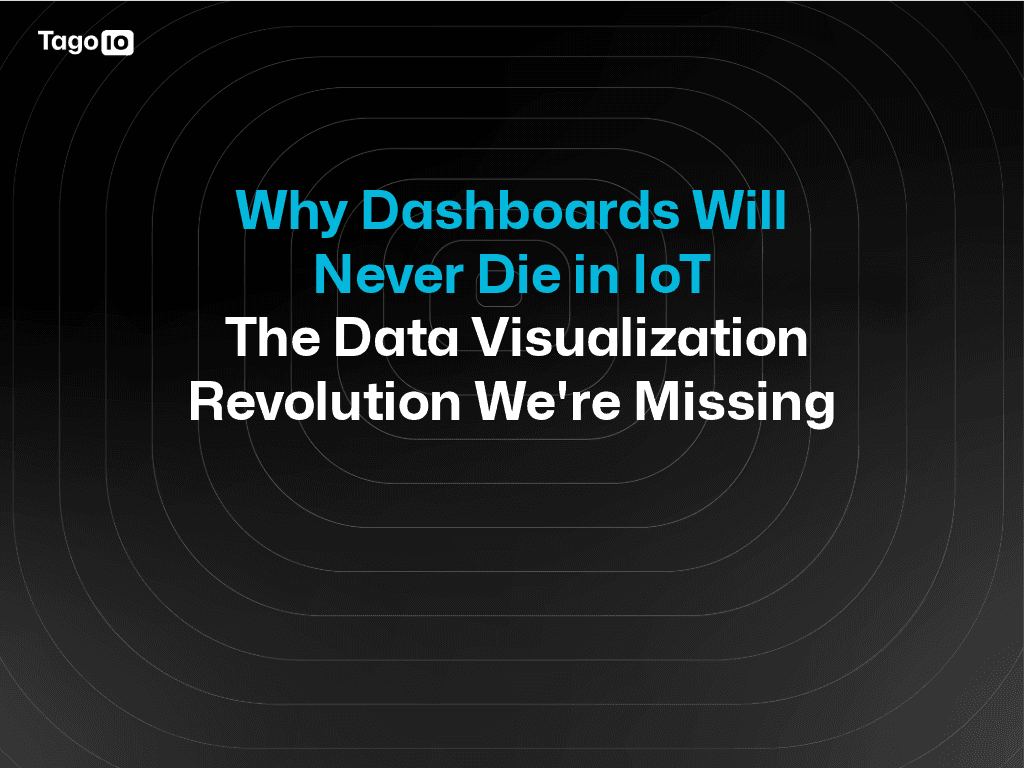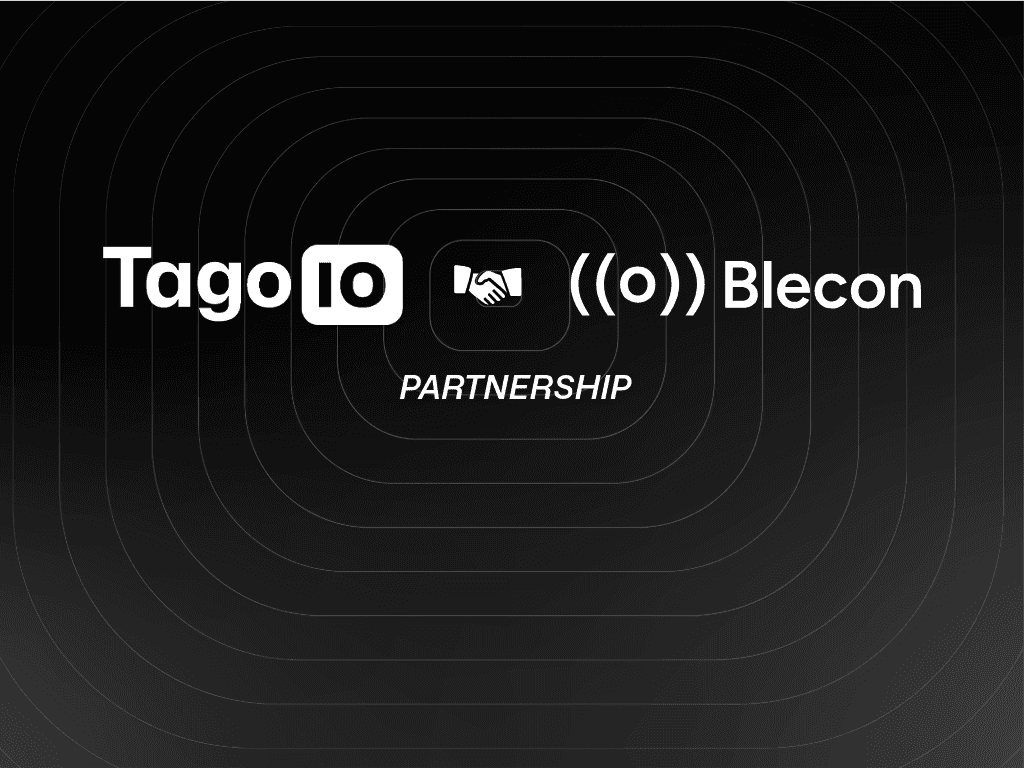Blog
Tech Insigths
What Is (and Is Not) an IoT Platform? A Clear Guide for Businesses and Builders
Discover what an IoT platform really is — and what it isn’t. This guide explains the core components, benefits, and myths around IoT platforms, with real-world examples like TagoIO to help you choose the right solution for your connected projects.

TagoIO Team
May 30, 2025



The term IoT platform has become increasingly common — but also increasingly confusing. If you're navigating the world of connected devices, data streams, and automation, it's crucial to understand what an IoT platform really is, what it does, and just as importantly, what it is not.
This guide breaks it down clearly so you can make smart decisions in your IoT journey — whether you're building your first prototype or scaling a global deployment.
What Is an IoT Platform?
An IoT platform is a comprehensive set of software tools and services that helps you connect, manage, and extract value from connected devices (aka the “Internet of Things”).
Think of it as the central nervous system of your IoT solution: it connects your devices to the cloud (or edge), processes incoming data, enables automation, visualizes insights, and integrates with other business systems.
An IoT platform plays a central role in transforming connected devices into actionable business insights. It begins by allowing you to connect devices and manage secure communication, ensuring that each sensor or machine can reliably and safely transmit data to the cloud or central system. This connection is often facilitated using protocols like MQTT, HTTPS, or LoRaWAN, depending on the use case and connectivity needs.
Once devices are connected, the platform collects and stores data from those sensors or machines. This data may include temperature readings, GPS coordinates, pressure levels, or any other telemetry relevant to your operations. The platform organizes and timestamps this information, making it available for analysis or reporting. From there, users can visualize insights through dashboards and alerts, using custom charts, widgets, and maps to monitor performance, track anomalies, or view trends over time in a user-friendly interface.
Finally, an IoT platform empowers organizations to act on data through rules, automations, and integrations. For example, if a sensor detects a critical threshold, the platform can automatically send alerts via SMS or email, trigger a machine response, or push data to an external system like an ERP or cloud service. This ability to define logic and seamlessly integrate with other tools turns passive data into real-time, intelligent action.
Core Components of a Modern IoT Platform
A mature IoT platform typically includes all the topics described in this section and depicted on the image below.

1. Device Management
A foundational capability of any IoT platform is the ability to manage devices at scale. This includes onboarding, where new devices are registered and provisioned securely; tracking, which lets you monitor where devices are and what they’re doing; and remote diagnostics, allowing for updates and troubleshooting without being physically near the equipment. Good device management also supports full lifecycle oversight, from deployment through maintenance to decommissioning, ensuring you have full visibility and control over your connected assets.
2. Connectivity Handling
IoT devices use a range of communication technologies — from cellular, LoRaWAN, Satellite, and Wi-Fi to NB-IoT and others. A robust IoT platform should seamlessly handle this diversity, supporting various protocols like MQTT, HTTP, and CoAP to ensure reliable data transfer. It should also manage the challenges of real-world connectivity, such as network dropouts, intermittent signals, and the need for automatic reconnections, so that your data keeps flowing without manual intervention.
3. Data Ingestion & Storage
Once data reaches the platform, it needs to be processed efficiently. This begins with real-time data pipelines that ingest incoming data, followed by storage systems that maintain it in a structured, accessible format. Good platforms apply timestamping, data normalization, and enforce retention policies to make sure the data remains useful and compliant. Most importantly, they are optimized for time-series data, which is critical for monitoring trends and patterns over time.
4. Dashboards & Visualization
One of the most user-facing elements of an IoT platform is its dashboard and visualization capability. Users can build custom graphs, maps, and widgets to monitor sensor data in real time or review historical trends. These dashboards help translate raw data into meaningful insights. Platforms also support role-based access, so different users — from technicians to executives — can view the information most relevant to them, securely and efficiently.
5. Automation & Rules Engine
A powerful feature of modern IoT platforms is the ability to set up rules and automated actions without writing extensive code. You can define conditions and triggers (e.g., "send an alert if temperature exceeds 50°C") and then automate workflows such as sending notifications, activating actuators, or integrating with external systems via APIs. This flexibility enables real-time decision-making and reduces the need for constant human monitoring or intervention.
6. Security & Access Control
Security is non-negotiable in any connected environment. An IoT platform should support end-to-end encryption, both in transit and at rest, ensuring that data is protected from interception or tampering. It should also provide robust device authentication to prevent unauthorized access, and enable detailed user and role-based permissions so that only the right people can access the right data and functionality at any given time.
7. Portal & User Management
Beyond devices and data, an effective IoT platform should include a comprehensive portal and user management system. This allows organizations to manage who can access what, customize their experience, and even create multi-tenant environments where different customers or departments have isolated views and controls. With proper user management, platforms become scalable not just in technology, but also in how they serve various internal teams or external clients.
Example: TagoIO
A great example of a modern IoT platform is TagoIO — a cloud-based, full-stack, low-code solution that helps businesses:
Quickly build dashboards
Manage devices using MQTT/HTTPS/LoRaWAN
Set up real-time automation using scripts
Connect to third-party services via integrations
Engage with end-users through a branded portal
With TagoIO, you can go from sensor to fully operational app in days, not months. It’s a powerful tool for teams that want to move fast without compromising on scalability or flexibility.
What an IoT Platform Is Not
To avoid confusion and misaligned expectations, here’s what an IoT platform is not:
1. Just a Dashboard Tool
While dashboards are useful, an IoT platform is far more than that. It handles the entire data pipeline — from device to decision.
2. A Connectivity Provider
An IoT platform isn’t just a SIM provider or network operator. It manages data after it’s transmitted — including processing, rules, automation, and integration.
3. A General-Purpose Data Lake
Big data platforms focus on static analytics. IoT platforms are built for live, event-driven, time-series data, often with actions tied to specific device states.
4. A One-Time Setup
IoT systems are dynamic — devices come and go, rules evolve, apps change. A proper platform supports continuous iteration and scaling.
5. A Black Box
A real IoT platform doesn’t lock you in. It should be transparent, extensible (via APIs, scripting, SDKs), and easy to integrate with your broader stack.
IoT Platforms Today: Like ERP/CRM in the Early Days
IoT platforms today are at a stage reminiscent of ERP and CRM systems in their early days, when companies often tried to build their own solutions before realizing the complexity and long-term costs involved. Many businesses initially approached IoT with a DIY mindset, believing they could develop custom platforms tailored to their needs.
However, just as history showed with ERP and CRM, the technical challenges, integration requirements, ongoing maintenance, and need for scalability quickly proved overwhelming. As a result, a growing number of companies are now recognizing that building an IoT platform from scratch is not a sustainable strategy. Instead, they are turning to mature, commercially available IoT platforms that offer proven architectures, robust security, scalability, and ongoing vendor support—allowing them to focus on their core operations and unique applications rather than reinventing the wheel.
The Right Platform Enables Real Results
A great IoT platform isn't just about connectivity or dashboards — it's about delivering real business outcomes. Implementing an IoT platform leads to fewer manual processes by automating data collection, reporting, and response workflows. Instead of relying on staff to manually log readings or inspect equipment, connected sensors continuously monitor and transmit data in real time. This reduces human error, frees up resources, and allows teams to focus on higher-value tasks.
As a result, companies often experience lower operational costs. With less downtime, fewer unplanned repairs, and more efficient resource allocation, the return on investment becomes clear. In particular, predictive maintenance becomes possible — where machines alert you before failures occur, based on patterns in temperature, vibration, or usage. This shift from reactive to proactive maintenance minimizes costly interruptions and extends asset lifespans.
An IoT platform also provides better visibility across assets, whether they’re on a factory floor, across a supply chain, or in the field. Teams can monitor performance, detect anomalies, and benchmark efficiency from anywhere. This visibility enables a faster response to events, since alerts and automated workflows kick in as soon as thresholds are crossed. Ultimately, the result is smarter, more sustainable operations — with optimized energy use, reduced waste, and data-driven decisions that support both business performance and environmental goals.
If you're investing in IoT now, you're not late — you're right on time. And with platforms like TagoIO, you're better equipped than ever to turn devices and data into real impact.

TagoIO Team


